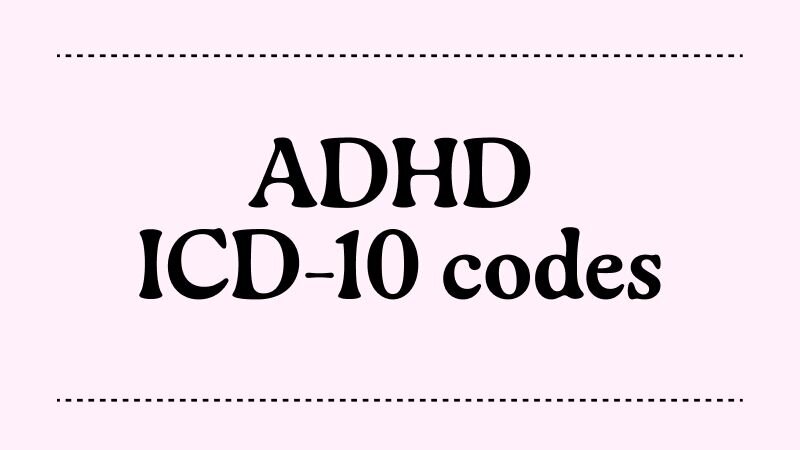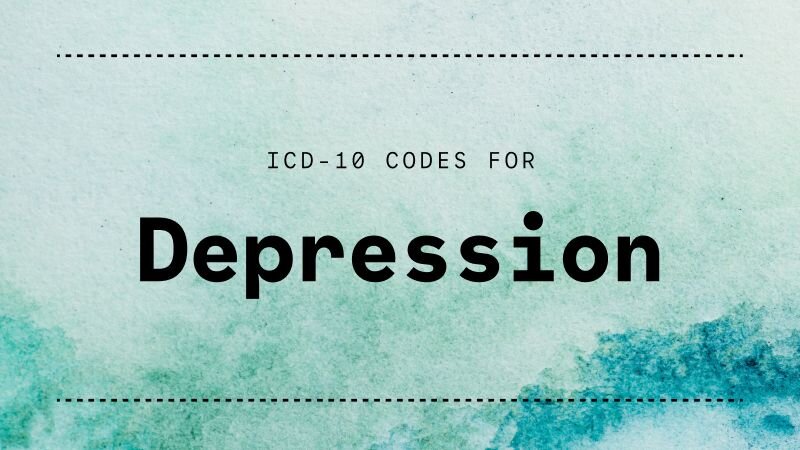
ICD-10 Codes for ADHD
A client presenting the symptoms of ADHD will most commonly be diagnosed with a specifier code that provides detail about how their symptoms present.

The ICD-10 includes one general code for PTSD, along with specifier codes that include a greater level of detail.
The diagnosis codes for post-traumatic stress disorder, or PTSD, are included under the ICD-10 section for “Neurotic, stress-related and somatoform disorders,” alongside codes for anxiety and adjustment disorders.
What makes PTSD different from anxiety or adjustment disorders is the association with a specific traumatic event, and often includes episodes of re-experiencing the event, avoidance of activities or situations that remind the client of the event, and related hyperarousal symptoms.
The ICD-10 coding manual includes one general code for PTSD: F43.1. It also includes specifier codes, like the ones below, which include a greater level of detail based on the duration of symptoms.
It’s important that you make a clear, accurate and specific diagnosis that is appropriate to your individual patient clinical picture. These examples should be for reference and are not intended to guide a diagnosis. The client must meet diagnostic criteria for the F code they are assigned.
Working with insurance can be confusing at times. Headway has developed easy and simple tools to help you stay compliant, handle claims quickly, and operate your practice with confidence.
With Headway handling your billing, you’ll get paid every two weeks and have renewed space to focus on helping your clients.
A client presenting the symptoms of PTSD is most commonly diagnosed with one of the following specifier codes:
The diagnosis of symptoms for each subtype is based on the criteria description for F43.1: Post-traumatic stress disorder:
Arises as a delayed or protracted response to a stressful event or situation (of either brief or long duration) of an exceptionally threatening or catastrophic nature, which is likely to cause pervasive distress in almost anyone. Predisposing factors, such as personality traits (e.g. compulsive, asthenic) or previous history of neurotic illness, may lower the threshold for the development of the syndrome or aggravate its course, but they are neither necessary nor sufficient to explain its occurrence. Typical features include episodes of repeated reliving of the trauma in intrusive memories ("flashbacks"), dreams or nightmares, occurring against the persisting background of a sense of "numbness" and emotional blunting, detachment from other people, unresponsiveness to surroundings, anhedonia, and avoidance of activities and situations reminiscent of the trauma. There is usually a state of autonomic hyperarousal with hypervigilance, an enhanced startle reaction, and insomnia. Anxiety and depression are commonly associated with the above symptoms and signs, and suicidal ideation is not infrequent. The onset follows the trauma with a latency period that may range from a few weeks to months. The course is fluctuating but recovery can be expected in the majority of cases. In a small proportion of cases the condition may follow a chronic course over many years, with eventual transition to an enduring personality change (F62.0).
The diagnostic criteria for PTSD can often overlap or be confused with other diagnoses, which may be more or less appropriate for a particular client’s presenting symptoms:
The ICD-10 is a coding system developed by the World Health Organization (WHO) for the classification of diseases and other health-related conditions. The alphanumeric codes in the ICD-10 are used by healthcare providers and insurance companies to represent disorders and other health conditions for the purpose of standardizing medical records and billing.
Its name, ICD-10, stands for the International Classification of Diseases 10th Edition; the 10th edition was endorsed in 1990 to replace the ICD-9, and fully adopted in the United States by October 1, 2015.
The DSM-5 (Diagnostic and Statistical Manual of Mental Disorders, Fifth Edition) and the ICD (International Classification of Diseases, Tenth Revision) are both classification systems used in the diagnosis of mental health disorders, but they have different origins, purposes, and scopes.
The DSM-5 is published by the American Psychiatric Association (APA), is used primarily in the United States, and focuses exclusively on mental disorders.
The ICD-10 is published by the World Health Organization (WHO), is used worldwide, and covers all health-related issues, not just mental disorders.
The DSM-5 is compatible with the ICD-10 coding system now in use by many insurance companies. Because it has a narrower scope, the DSM-5 includes more detail about the diagnostic criteria for mental disorders. The criteria included in the DSM-5 can be used to diagnose mental health disorders, and documentation should demonstrate the support of this diagnostic criteria.
This document is intended for educational purposes only. It is designed to facilitate compliance with payer requirements and applicable law, but please note that the applicable laws and requirements vary from payer to payer and state to state. Please check with your legal counsel or state licensing board for specific requirements.

A client presenting the symptoms of ADHD will most commonly be diagnosed with a specifier code that provides detail about how their symptoms present.

Here are some of the most common ICD-10 codes associated with depressive symptoms, with different criteria for frequency, severity, and other features.

There are many ICD-10 codes associated with anxiety disorders. Generalized Anxiety Disorder is most common, but there may be a more precise code that documents your diagnosis more effectively.